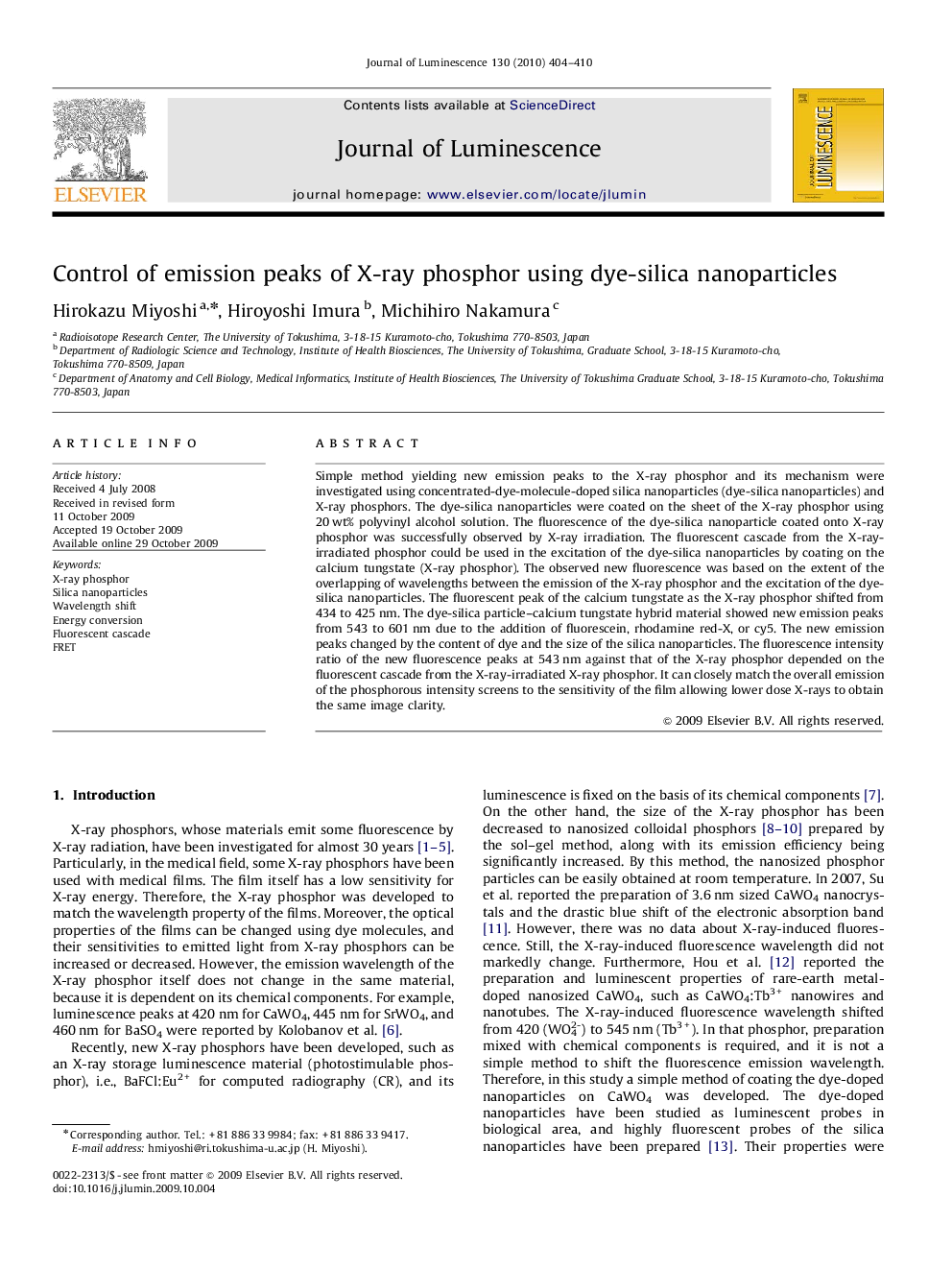| Article ID | Journal | Published Year | Pages | File Type |
|---|---|---|---|---|
| 5402806 | Journal of Luminescence | 2010 | 7 Pages |
Abstract
Simple method yielding new emission peaks to the X-ray phosphor and its mechanism were investigated using concentrated-dye-molecule-doped silica nanoparticles (dye-silica nanoparticles) and X-ray phosphors. The dye-silica nanoparticles were coated on the sheet of the X-ray phosphor using 20Â wt% polyvinyl alcohol solution. The fluorescence of the dye-silica nanoparticle coated onto X-ray phosphor was successfully observed by X-ray irradiation. The fluorescent cascade from the X-ray-irradiated phosphor could be used in the excitation of the dye-silica nanoparticles by coating on the calcium tungstate (X-ray phosphor). The observed new fluorescence was based on the extent of the overlapping of wavelengths between the emission of the X-ray phosphor and the excitation of the dye-silica nanoparticles. The fluorescent peak of the calcium tungstate as the X-ray phosphor shifted from 434 to 425Â nm. The dye-silica particle-calcium tungstate hybrid material showed new emission peaks from 543 to 601Â nm due to the addition of fluorescein, rhodamine red-X, or cy5. The new emission peaks changed by the content of dye and the size of the silica nanoparticles. The fluorescence intensity ratio of the new fluorescence peaks at 543Â nm against that of the X-ray phosphor depended on the fluorescent cascade from the X-ray-irradiated X-ray phosphor. It can closely match the overall emission of the phosphorous intensity screens to the sensitivity of the film allowing lower dose X-rays to obtain the same image clarity.
Related Topics
Physical Sciences and Engineering
Chemistry
Physical and Theoretical Chemistry
Authors
Hirokazu Miyoshi, Hiroyoshi Imura, Michihiro Nakamura,
